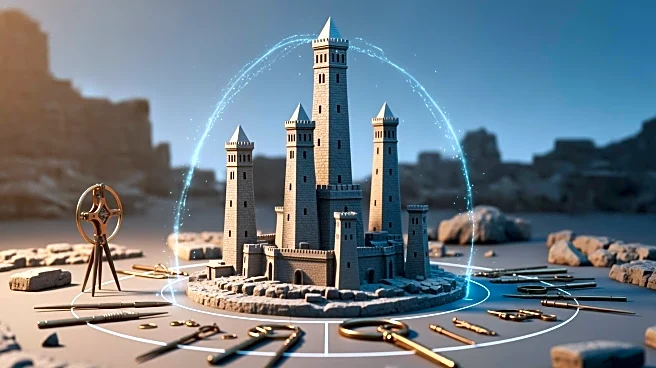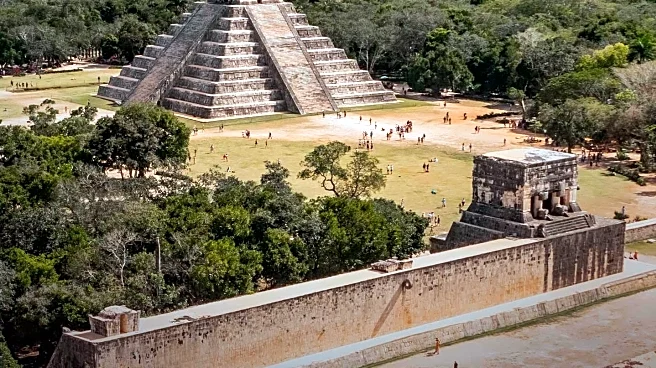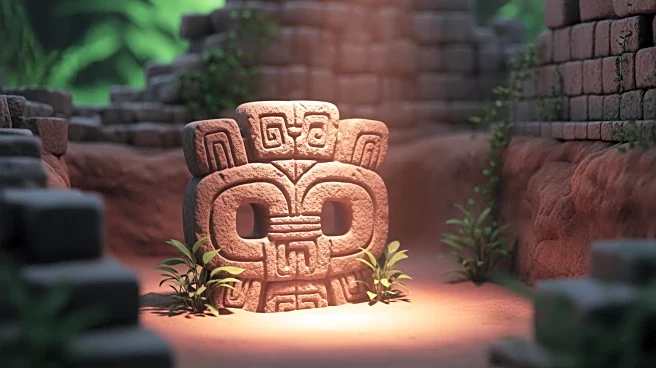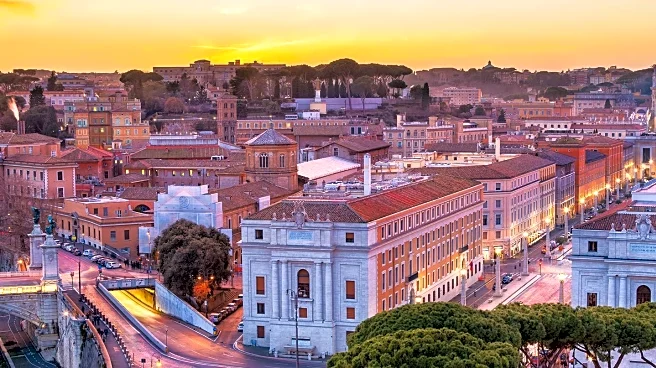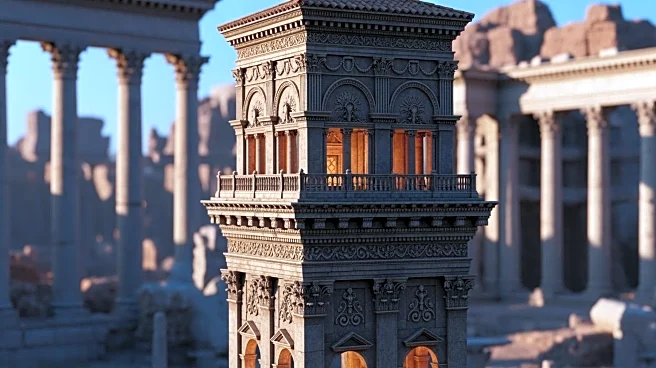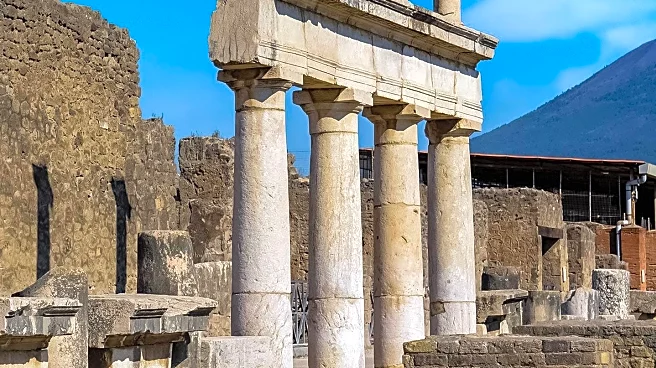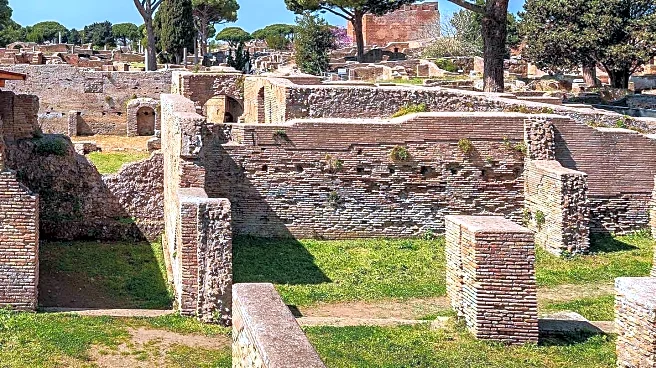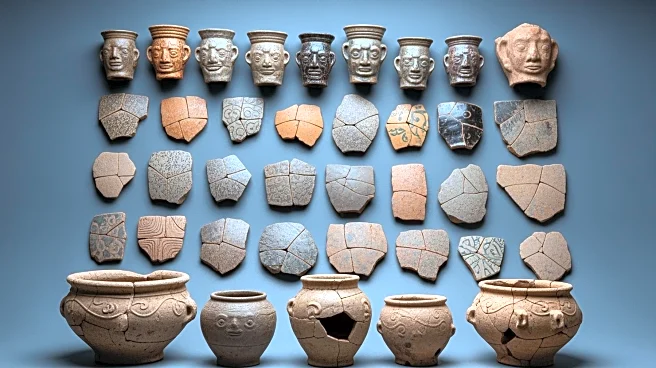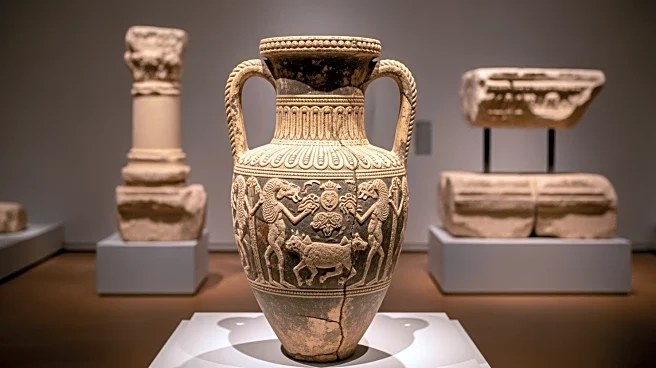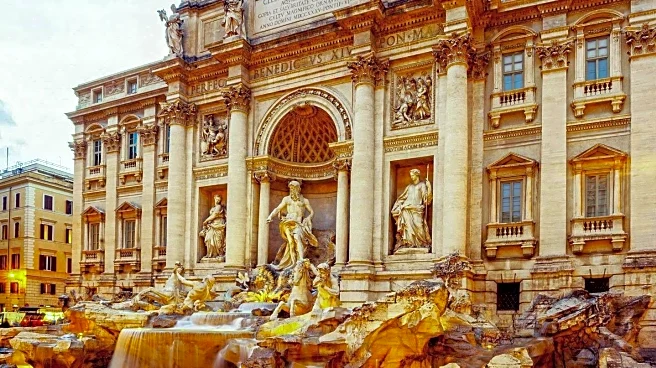What's Happening?
Researchers from the Pompeii Archaeological Park and Berlin's Humboldt University have employed advanced 3D technology to reconstruct buildings in Pompeii, revealing that the ancient city may have been dominated by towers symbolizing power and wealth.
This discovery is part of the ongoing Pompeii Reset project, which aims to understand the city's architectural and social dynamics before it was buried by the eruption of Mount Vesuvius in 79 AD. A notable case study involves the House of Thiasus, believed to be owned by a prominent first-century politician, which featured a monumental stone staircase leading to a tower. The reconstruction suggests that these towers were not merely decorative but served functional purposes, such as providing panoramic views and hosting dining chambers.
Why It's Important?
The findings challenge previous assumptions that upper floors in Pompeii were primarily used for cheap rentals or slave quarters. By revealing the existence of grand towers, the study provides new insights into the social hierarchy and lifestyle of Pompeii's elite. This research not only enhances the understanding of ancient Roman architecture but also offers a glimpse into the daily lives and social structures of its inhabitants. The use of 3D technology in archaeology represents a significant advancement, allowing for more accurate reconstructions and interpretations of historical sites, which can influence future archaeological methodologies and educational approaches.
What's Next?
The ongoing research may lead to further discoveries about the architectural and social complexities of ancient Pompeii. As more buildings are reconstructed, historians and archaeologists can gain a deeper understanding of the city's urban planning and the role of architecture in social stratification. The project may also inspire similar technological applications in other archaeological sites, potentially revolutionizing the field by providing more comprehensive and interactive ways to study ancient civilizations.
Beyond the Headlines
The study's implications extend beyond archaeology, touching on cultural and historical narratives about ancient Rome. By reconstructing these towers, researchers are not only piecing together physical structures but also reconstructing the stories and lives of those who inhabited them. This work highlights the importance of preserving and studying historical sites, as they offer invaluable insights into human history and cultural evolution.
